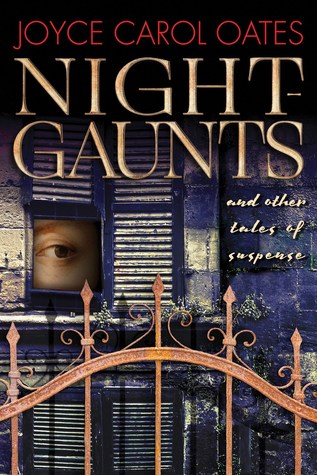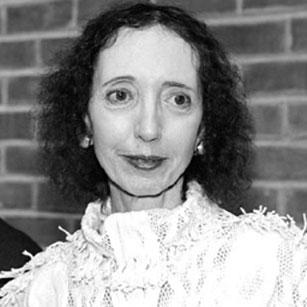Copyright 2010 by Gary L. Pullman

Before he wrote horror and cross-genre fiction, Dean Koontz wrote science fiction. Arguably, his earlier stuff is better than his current material. In “Undercity,” which appears in the anthology
Future City, edited by Roger Elwood (Trident Press, NY, 1973, pp. 81-95), Koontz extrapolates from contemporary cities, such as Las Vegas, Nevada, using its gambling enterprise and its reputation, as “Sin City,” for vice as the basis for his own criminal world of nefarious Mafia-like criminal characters, the narrator, who goes by the alias Lincoln Pliney, included.
The title of his story is not all that original, but, in the 1970s, many were just as mundane, and what counted was the twist to which an author could put to a then-contemporary situation or state of affairs. Koontz’s story successfully establishes and maintains the allegory of a futuristic “undercity” representing the underbelly of the modern criminal world in which members of rime form an “underworld.” In case one of his more obtuse readers misses the extended comparison, Koontz is careful to have his narrator inform the reader that the undercity replaced what had once been the underworld, a loose confederation of criminals in which characters like Pliney were “feared” and “envied.”
Huge subterranean megalopolises of towering structures, undercities are hives of gambling, prostitution, legalized prostitution, dueling, and other vices. Perhaps in an attempt to thwart crime, the government has legalized most such activities. Adultery is no longer stigmatized, and hired killers need no longer apply, for dueling provides a legal means of settling one’s scores. In fact, if one is challenged to a duel, he or she must accept the challenge, unless he or she has a pass.
Pliney is telling a younger person, referred to throughout the story simply as “kid,” about his day, to show how hard it is to make a living as a criminal in an environment in which most activities that were once outlawed are now legal. To m make a living, he says, an individual must constantly “hustle.” To illustrate his contention, he describes his activities, which, he implies, are typical of any day’s dealings in the undercity.
He started his day with an accomplice, sabotaging Gia Cybernetic Repairs, a robot fix-it plant. Then, he delivered a map of part of the undercity’s sewer system to Gene and Miriam Potemkin, a couple who want to escape from the undercity, despite the rumors that, beyond its protective dome, the atmosphere is contaminated by poisons and is inhospitable to life. They are willing to risk death, they say, to avoid the constricting limits of their environment.
Pliney next visit’s the megalopolis’ garbage dump, where he works with K. O. Wilson, who manages the operation’s first shift, and Marty Linnert, who manages the operation’s second shift, allowing Pliney to skim off valuables from the undercity’s refuse before it is “catalogued and sent up to the city’s lost-and-found bureau.” During this visit, Pliney is able to scavenge rings, watches. Coins, and a “diamond tiara.”
Following his visit to the garbage site, Pliney learns that the sabotaged robot-repair plant has been repaired--by men on his payroll, who have charged an exorbitant fee. He then arranges an illegal marriage between Arthur Coleman, a dominant, sexist man, and his submissive girlfriend Eileen, in defiance of the undercity’s Equal Rights Act, which forbids male chauvinism.
Revisiting the garbage dump, Pliney scavenges “silver dinnerware an antique oil lantern, and a somewhat soiled set of twentieth-century pornographic photographs” worth big money as “comic nostalgia.” Then, he illegally sells an oversize apartment--that is, one that is larger than the law allows a single man--to a customer with a yen for more spacious accommodations than he now enjoys.
The Potemkins are caught by a maintenance crew as they seek to escape through the sewer tunnel on Pliney’s map, and afraid that, during their interrogation by the police, the couple will implicate him in their escape plan, he burns down the office--a front doing business (or not) as Cargill Marriage Counseling--in which he keeps additional escape maps. (During his recounting of this adventure, he tells his listener that he must be careful to avoid arrest, even to the point of wearing “transparent plastic fingertip shields to keep from leaving prints.” It‘s obvious that, as he recites his day‘s activities, Pliney takes every opportunity to lecture the “kid” concerning the tricks of the criminal trade. He is not merely a raconteur; he is a mentor.)
Coleman advises Pliney that he and his girlfriend want to marry this evening, instead of waiting the customary six months to do so, and if Pliney refuses to arrange the ceremony, he will take his business elsewhere. Afraid that Coleman will hire “some incompetent criminal hack who’ll botch the falsification of Eileen’s death certificate,” which is needed before a new identity can be fabricated for her, making her a person without a past that the police can check, and that Coleman and Eileen will be arrested, informing the police about him, Pliney agrees to meet with the couple to “finalize things” that night, although, to do so, he must postpone an appointment with a man who wants to buy a “Neutral Status Pass” that will exempt him from accepting duel challenges.
His meeting with Coleman and his bride to “:finalize things” is the reason, he tells his listener, that he is late getting home. The next day, he says, the “kid” can tag along as he goes about his business, so that he can provide tips as he teaches her “the business.” He adds that he has no doubt but that her late mother would be proud of their daughter, who has all the qualities of a successful career criminal.
Koontz’s tongue-in-cheek story suggests that human beings are innately wired, as it were, to sin. Even if vices were legalized, others would flourish, because it is the nature of men and women to seek that which is forbidden and to indulge themselves in the pursuit of the banned and the prohibited. It is this impulse, he suggests, which explains the existence of both Las Vegas and organized crime, just as it explains the fact that, despite the existence of a “Sin City” and the mob, ordinary men and women, like the everymen and women who populate his undercity, vice, sin, corruption, and crime will continue to thrive everywhere. No city limits can contain the transgressions of the human heart. The undercity is every city. Moreover, Koontz suggests, even if humanity were to legalize activities which are currently illegal, forbidden desires would manifest themselves in the pursuit of objects and activities that would fall outside the laws of even the most permissive societies. The problem is not in the doing, he implies, but in the doer--or the wrongdoer.
That’s quite an impressive theme--original sin--for such a slight story. In this early piece of fiction, Koontz is as deft as ever in sketching characters (he has never been adept at true characterization, such as novels demand), at delivering the surprise ending (the criminal narrator’s protégé is his own daughter), at describing the setting, and at extrapolating from the actual and the familiar to the imaginary and bizarre, abilities which served him well as a science fiction writer, which served him well as an author of horror fiction, and which serve him moderately well as a writer of cross-genre fiction.
\
He hasn’t lost his touch, even today, but his fiction has lost some of its heart and soul, as any body of work must do when it is stamped out by the cookie cutter of formula with interchangeable characters, settings, plots, and themes--the same story, time and again, wherein only the names change. In his heyday, which, alas, was yesterday, Koontz could write more engaging fiction than the pap he produces today. “Undercity” is worth many of his current works, although it is but a short story and his current stuff takes the form of the novel.
There’s another plus about “Undercity” that a reader doesn’t get in any of Koontz’s more contemporary works. There’s no dog in the cast.





























